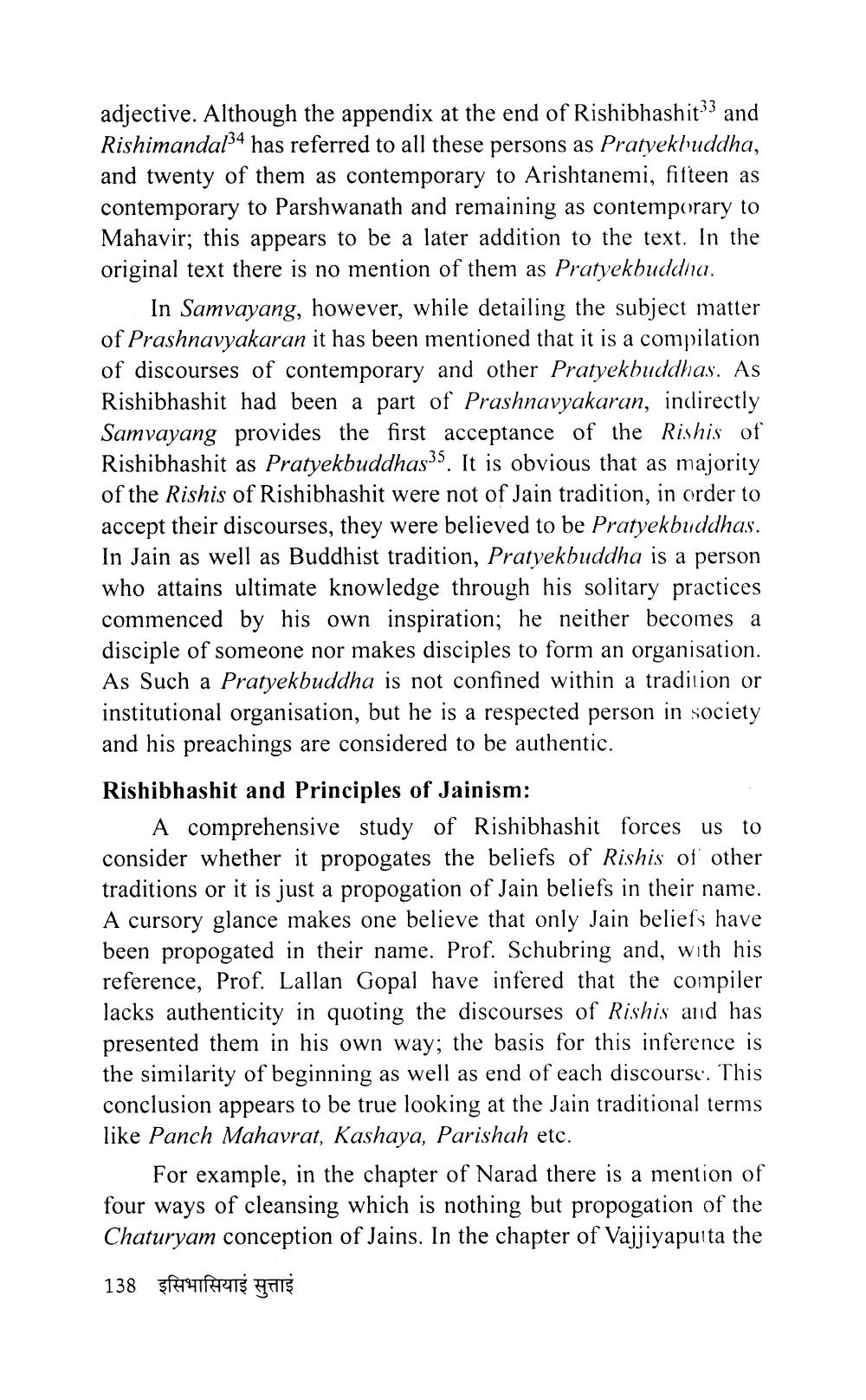________________
adjective. Although the appendix at the end of Rishibhashit)3 and Rishimandal4 has referred to all these persons as Pratyekbuddha, and twenty of them as contemporary to Arishtanemi, fifteen as contemporary to Parshwanath and remaining as contemporary to Mahavir; this appears to be a later addition to the text. In the original text there is no mention of them as Pratyekbuddna.
In Samvayang, however, while detailing the subject matter of Prashnavyakaran it has been mentioned that it is a compilation of discourses of contemporary and other Pratyekbuddhas. As Rishibhashit had been a part of Prashnavyakaran, indirectly Samvayang provides the first acceptance of the Rishis of Rishibhashit as Pratvekbuddhass. It is obvious that as majority of the Rishis of Rishibhashit were not of Jain tradition, in order to accept their discourses, they were believed to be Pratyekbuddhas. In Jain as well as Buddhist tradition, Pratyekbuddha is a person who attains ultimate knowledge through his solitary practices commenced by his own inspiration; he neither becomes a disciple of someone nor makes disciples to form an organisation. As Such a Pratyekbuddha is not confined within a tradition or institutional organisation, but he is a respected person in society and his preachings are considered to be authentic. Rishibhashit and Principles of Jainism:
A comprehensive study of Rishibhashit forces us to consider whether it propogates the beliefs of Rishis of other traditions or it is just a propogation of Jain beliefs in their name. A cursory glance makes one believe that only Jain beliefs have been propogated in their name. Prof. Schubring and, with his reference, Prof. Lallan Gopal have infered that the compiler lacks authenticity in quoting the discourses of Rishis and has presented them in his own way; the basis for this inference is the similarity of beginning as well as end of each discourse. This conclusion appears to be true looking at the Jain traditional terms like Panch Mahavrat, Kashaya, Parishah etc.
For example, in the chapter of Narad there is a mention of four ways of cleansing which is nothing but propogation of the Chaturyam conception of Jains. In the chapter of Vajjiyapuita the
138
TAHIRTS TAITE




